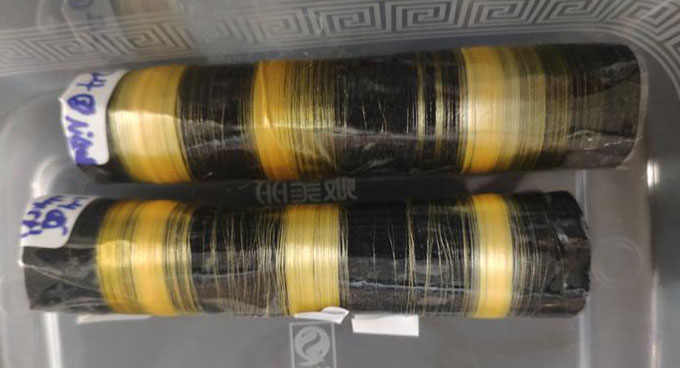In a first, genetically modified silkworms produced pure spider silk
Spider silk is prized for its unrivaled strength and toughness. But figuring out a way to mass-produce it is no easy feat. Spiders cannot be put to work to pump out the fibers the way silkworms can: They’re extremely territorial and inclined to eat their neighbors, and they refuse to keep at the task for long. So for decades, scientists have tried to genetically-engineer various organisms — including bacteria, yeast, mice, hamsters and even goats — to produce spider silk, but with only partial success.
Now, for the first time, researchers from China have coaxed pure spider silk out of genetically modified silkworms. The material is six times as tough as the Kevlar used in bulletproof vests, the team reports in the Oct. 4 Matter.
The fibers flaunt “better mechanical properties than anybody else has been able to show,” says molecular biologist Randy Lewis, a spider silk expert at Utah State University in Logan who wasn’t involved with the study.
The strands are not as strong or as stretchy as natural spider silk, but they are an advance (SN: 11/7/08). Previous work in silkworms generated weaker fiber blends of only 30 to 50 percent spider silk.
In the new study, the researchers used the gene-editing tool CRISPR/Cas9 to insert the complete instructions for making spider silk protein into silkworms and make sure the protein wound up in the silkworms’ silk-making glands. That allowed the team to take advantage of the insect’s natural machinery. Breeding the tweaked silkworms then resulted in some that inherited the spider silk gene from both parents, meaning they could produce purer spider silk.
If the silk someday makes it out of the laboratory, doctors could use it to sew extra-sturdy sutures. Police officers could don stronger armored vests. And a more environmentally friendly fiber could replace common synthetics like nylon and polyester.
“Spider silk stands as a strategic resource in urgent need of exploration,” Junpeng Mi, a synthetic biologist from Donghua University in Shanghai, said in a news release. Mi estimates that the surgical applications of spider silk alone could aid millions worldwide.
Yet mass production of spider silk faces hurdles. Mi and colleagues will first need to confirm that the genetic changes they induced in the silkworms will last several generations. If not, manufacturers may need to regularly jump-start the engineering process.

The researchers would also confront the same challenges of traditional silkworm farmers, including ensuring the insects’ health. Biologist Justin Jones, another spider silk researcher at Utah State University, notes that silkworms are notoriously vulnerable to infection.
Even when the silkworms are healthy, these factory workers can create disparate silk fibers. “In the silk world, as we’ve discovered, the real problem is that there are hundreds and hundreds of strains of silkworms out there that farms use, and … they don’t give you the same mechanical properties,” Lewis says.
Still, silkworms make one of the most attractive candidates for this type of genetic engineering. Most of the other modified creatures eke out only small amounts of usable fiber, in part because their enzymes chop up the DNA responsible for spider silk protein (SN: 4/2/19).
And pumping out protein is just one part of the process; spiders then dissolve the protein in a liquid called dope, and transform the resulting goop into a sturdy fiber. Although silkworms can be tricky to work with, the worms sidestep both challenges: Their bodies are already accustomed to producing silk.
Moving forward, Mi’s team hopes to develop even stronger and stretchier fibers. By incorporating artificial amino acids into the spider silk protein, Mi imagines the researchers could potentially push past even the upper limits of the natural fiber.
For all the latest Science News Click Here
For the latest news and updates, follow us on Google News.

